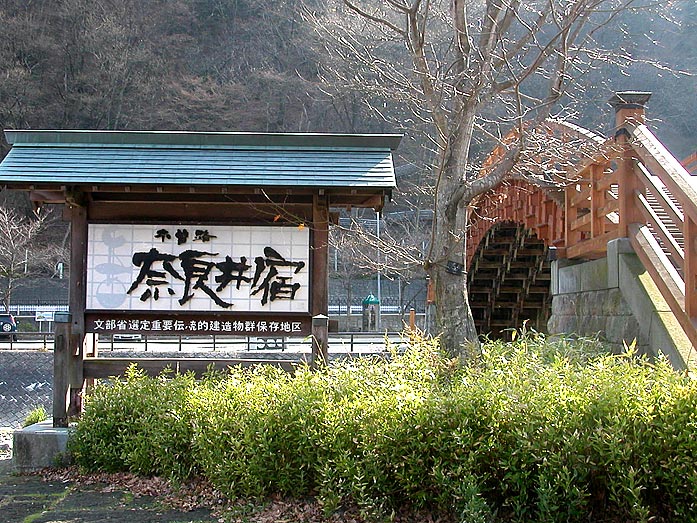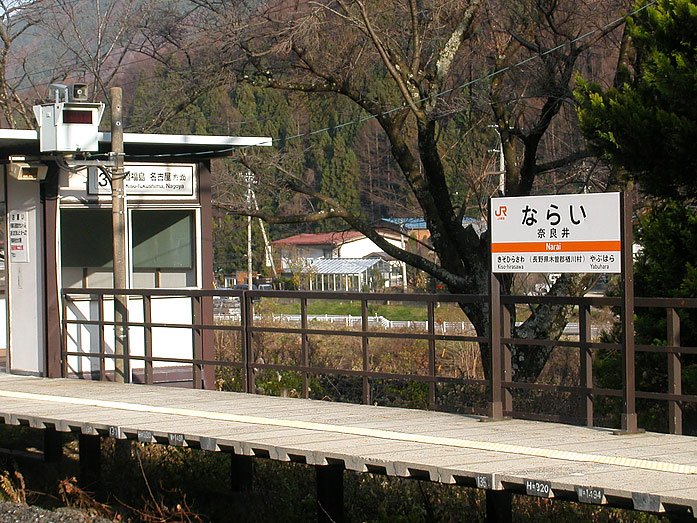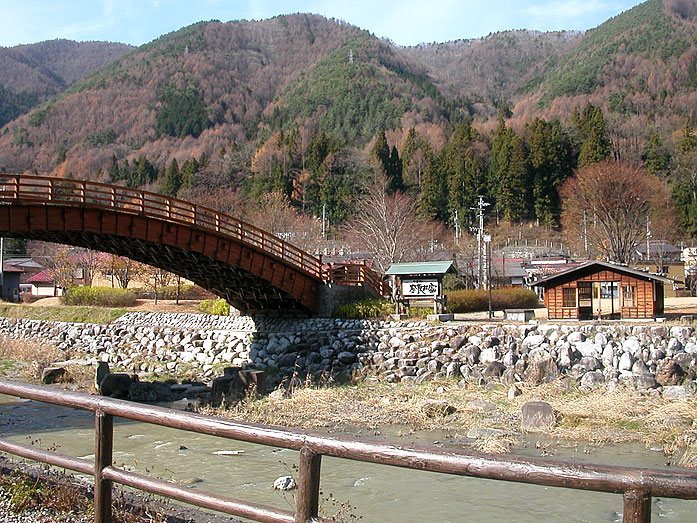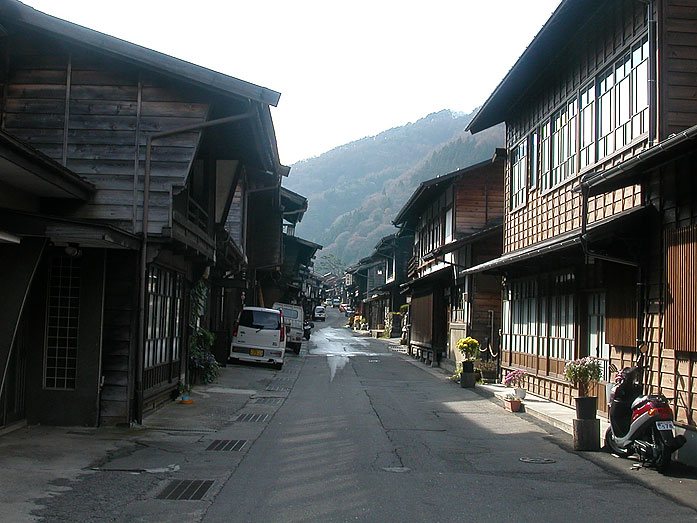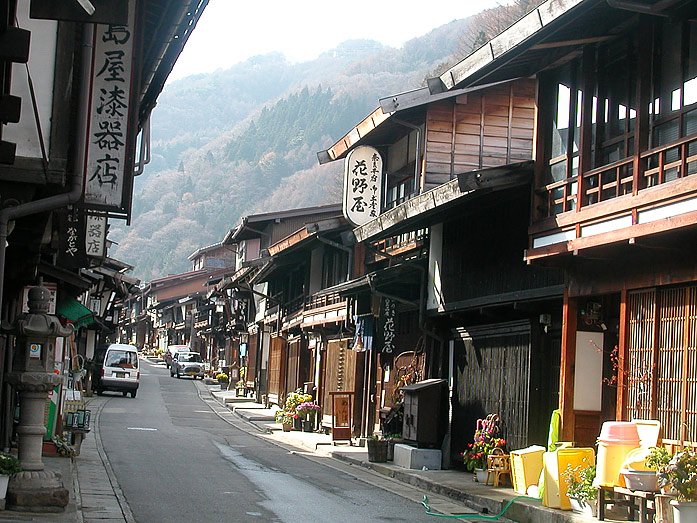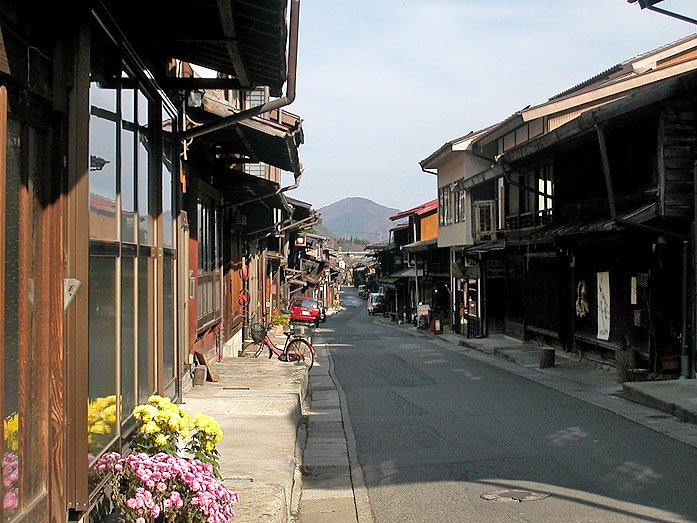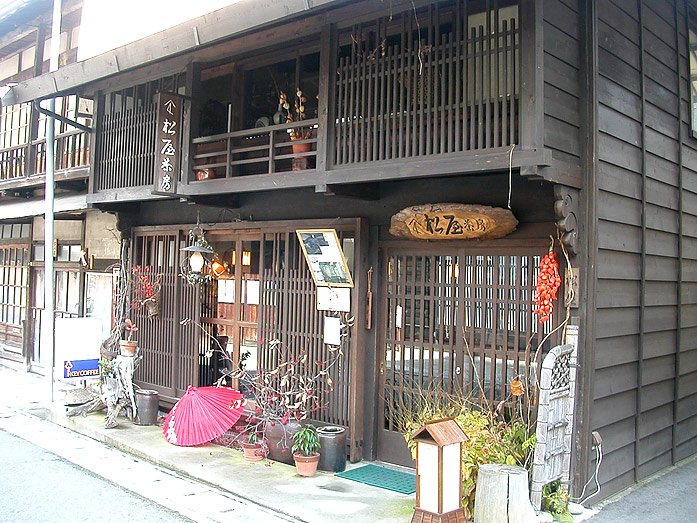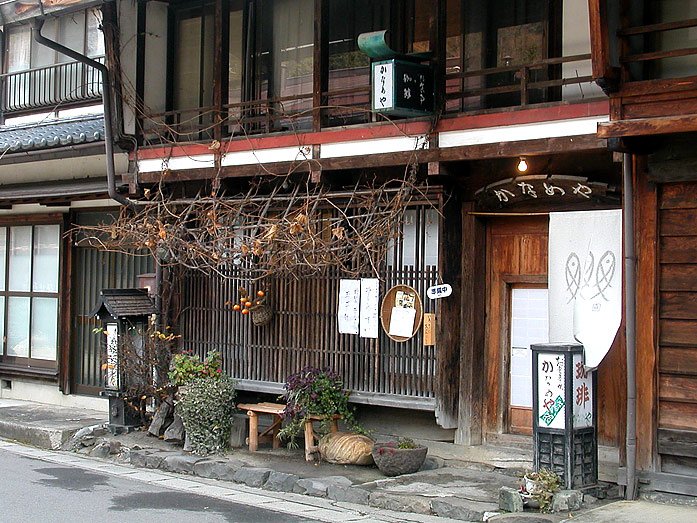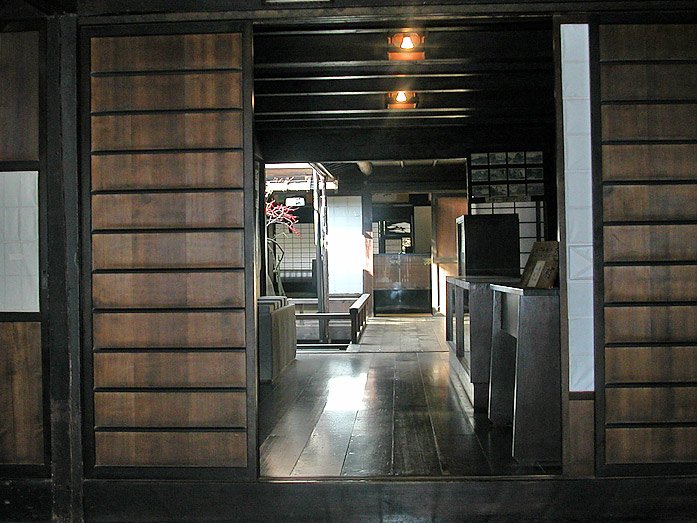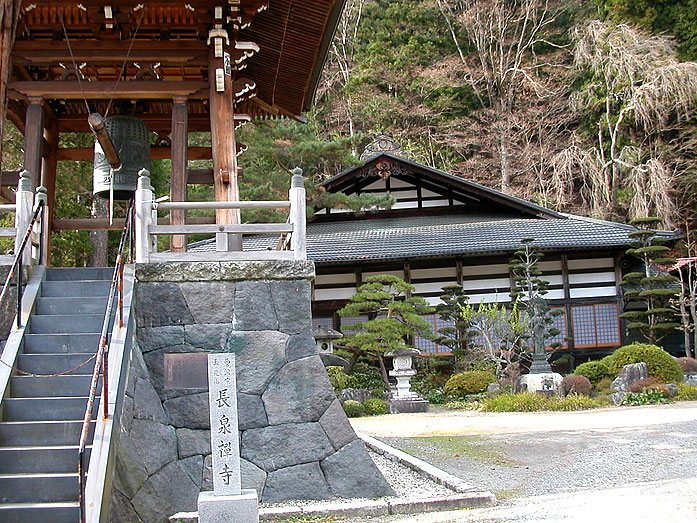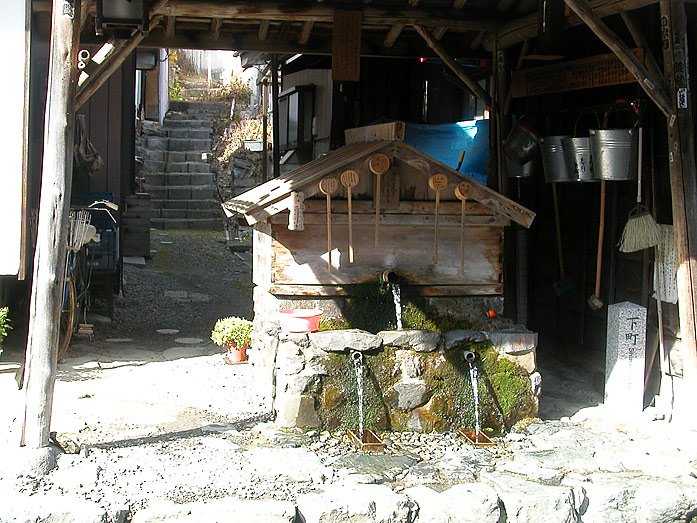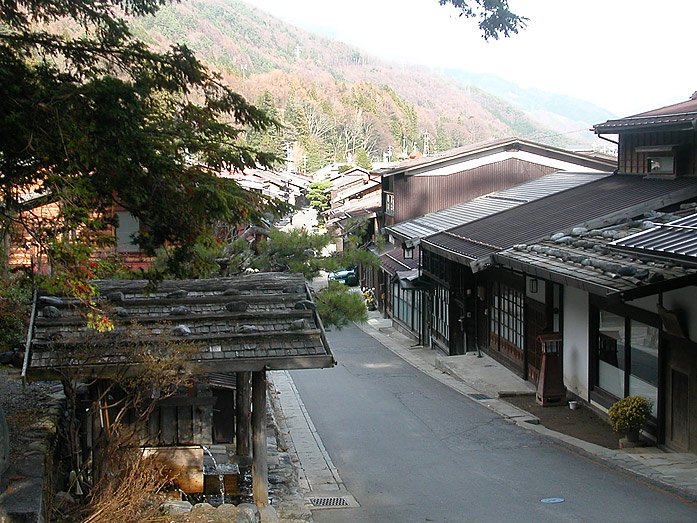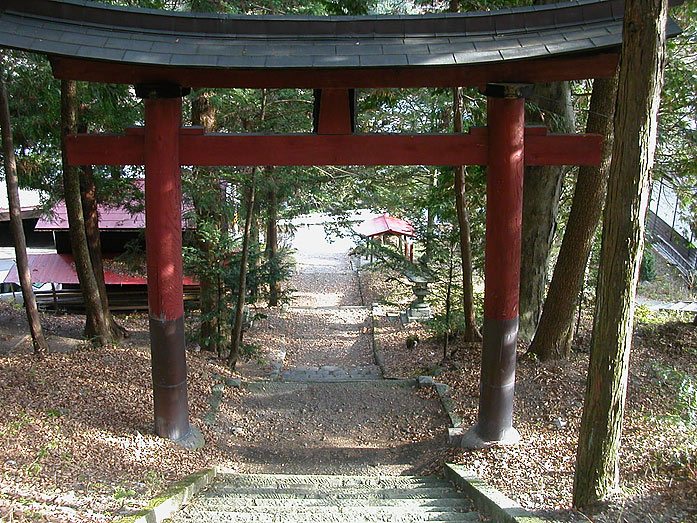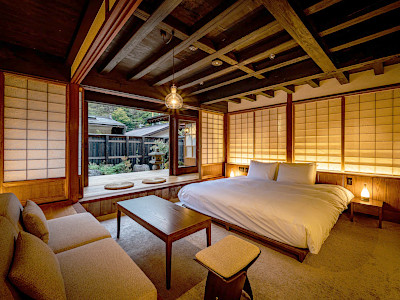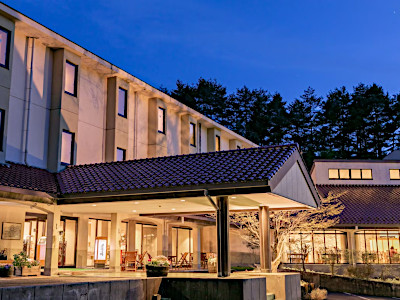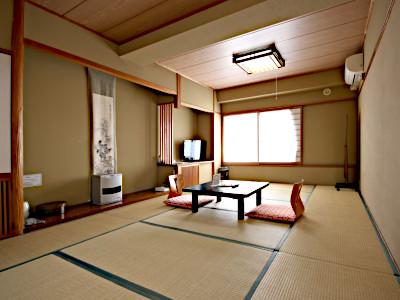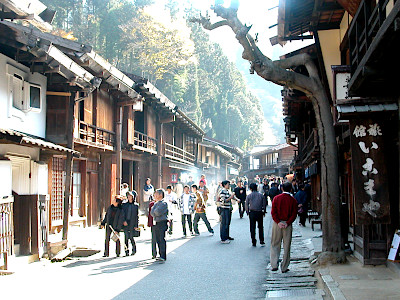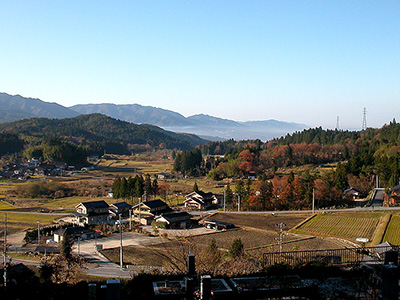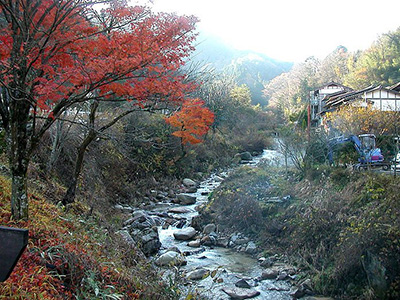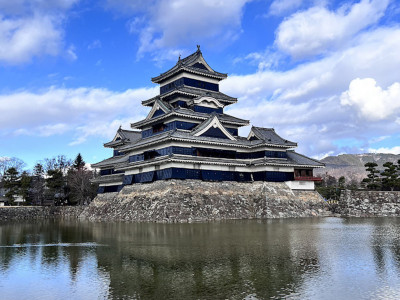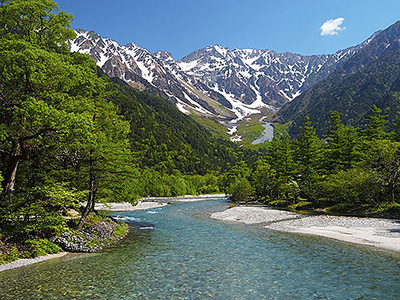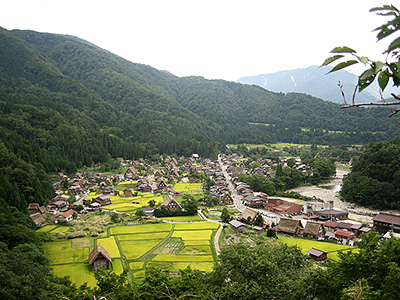Narai (Narai-juku) in Kiso Valley
This post can contain affiliate links, which means that we may receive a small commission if you make a purchase using these links.
Facts & Figures
Narai (Narai-juku), an old post town along the Nakasendo Route at the foot of the Torii Mountain Pass (1197m), is with its historical buildings the perfect example of how traditional Japanese architecture looked like during the Edo period (1603 – 1868). The town belongs to one of Japan's protected areas for the preservation of traditional buildings.
 Get Your Pass Now and Save!
Narai was during his heydays the most successful and wealthiest out of eleven towns along the route. It was also called "Narai of a Thousand Houses". The two-story wooden buildings would stretch for over 1 km. These days you will find there 50 historic buildings. The town is also the heart of the Kiso lacquer-making industry. When you stroll around make sure to visit some of the lacquer-ware shops or check out the nice restaurants, cafes, and minshuku lodges (traditional bed & breakfast lodgings operated by families). The shops are usually closing by 4:00 pm. The town itself consists of three parts, downtown (Shimomachi), midtown (Nakamachi), and uptown (Kanmachi). A hiking tour connecting the old post towns Narai, Tsumago and Magome is my must-do recommendation for you on your Japan trip. One more tip: Soba noodles are a specialty in the Kiso Valley area and you should try it out in one of the restaurants in the town.
Get Your Pass Now and Save!
Narai was during his heydays the most successful and wealthiest out of eleven towns along the route. It was also called "Narai of a Thousand Houses". The two-story wooden buildings would stretch for over 1 km. These days you will find there 50 historic buildings. The town is also the heart of the Kiso lacquer-making industry. When you stroll around make sure to visit some of the lacquer-ware shops or check out the nice restaurants, cafes, and minshuku lodges (traditional bed & breakfast lodgings operated by families). The shops are usually closing by 4:00 pm. The town itself consists of three parts, downtown (Shimomachi), midtown (Nakamachi), and uptown (Kanmachi). A hiking tour connecting the old post towns Narai, Tsumago and Magome is my must-do recommendation for you on your Japan trip. One more tip: Soba noodles are a specialty in the Kiso Valley area and you should try it out in one of the restaurants in the town.
- Narai-juku Tourist Information Center:
- Opening Hours - 09:00 am to 5:00 pm
- Nakamura Residence:
- Opening Hours - 09:00 am to 5:00 pm (April - November)
- Opening Hours - 09:00 am to 4:00 pm (December - March)
- Closed - never, open the whole year
- Admission Fee - 300 yen (Adults)
My tips for local activities
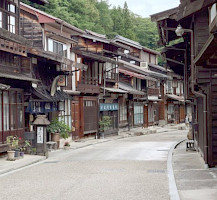
Explore within a day trip the best parts of Narai, Matsumoto Castle, or Nagano with a local English-speaking guide. The personalized tour by our partner GetYourGuide is an absolute highlight. For more details check out this page >
History
Narai was the 34th station out of 69 stations along the old Nakasendo Route and marked the halfway point of this journey. This route with a length of approx. 534 km connected Kyoto with Edo (Tokyo city) during the period when the Tokugawa shoguns ruled Japan (1603 - 1867). It was used by merchants, aristocrats, poets, and pilgrims, like the famous poet Matsuo Basho (1644 - 1694) and the painters/artists Keisai Eisen (1790 - 1848) and Utagawa Hiroshige (1797 - 1858). Since 1978 Narai has been designated as a national conservation district of traditional buildings by the Japanese government. Unfortunately, the Honjin and Wakihonjin could not be preserved. These were the two main inns for the samurai and their daimyo when they did their trips between Kyoto and Edo. In 2011 the town became well-known in Japan because the popular NHK TV show Ohisama was filmed here and in 2018 the movie Inugami Family.
Location

Narai belongs to the city Shiojiri and is located near the highest pass on the Nakasendo Route within the Nagano Prefecture.
Address of Narai-juku Tourist Information Center: 497-3 Narai, Shiojiri City, Nagano 399-6303
How to get to Narai?
- 2,5hrs from Tokyo Shinjuku Station to Shiojiri Station by JR Azusa Line and
- 20min from Shiojiri Station to Narai Station by JR Chuohonsen Line or
- 100min from Tokyo to Nagoya by JR Tokaido Shinkansen and
- 85min from Nagoya to Kisofukushima Station by JR Shinano (Limited Express) and
- 30min from Kisofukushima Station to Narai Station by local train or
- 45min from Matsumoto by local train for Nakatsugawa with JR Shinonoi & Chuo Lines
Sightseeing spots in Narai
Top:
Kiso-no-Ohashi (Kiso’s Big Bridge) - The bridge spans the Narai River with a length of 30m and is about 300 years old. The structure is made of Japanese hinoki cypress trees. It is one of the longest wooden bridges in Japan. In a period from April to November, the bridge gets illuminated at night.
Nakamura Residence - It is a well-preserved historic house built in 1840 in the dashibari-zukuri style. For a 300 yen entrance fee, you can study the amazing architecture and the history of the Nakamura family. Art pieces by former owner Rihei Nakamura, a wealthy wholesale comb merchant, can be seen in the garden.
Kamidonya Shiryokan - Another beautiful historic house by a wholesaler in Narai. Check it out and get a glimpse of how people lived here for hundreds of years.
Chosenji Temple - This Soto Zen temple was built in 1366. The main hall was reconstructed in 1866. The Dragon Ceiling Painting at the main hall is my must-see recommendation for you. Chosenji was also the main lodging place for the Tea Urn Procession.
Shizume-jinja Shrine - It is a Shinto shrine with a great atmosphere. The main hall can be visited on the 11th and 12th of August.
Narai Notice Board (kosatsuba) - Before the invention of social media :) the shogunate used these boards to announce new rules/mandates to the public.
200 Jizo statues (stone Buddhist statues) - The statues are located at the northern end of Narai within a graveyard. Every statue is unique in its facial expression. Travelers who died during their trip along the Nakasendo Route were buried here.
Taihoji Temple - The temple was constructed in 1582 and is dedicated to Jurojin (god of wisdom and long life). It houses the Maria Jizo statue.
Narakawa Historical and Folklore Museum - The museum was open to the public in 1973. Here you can learn more about the Kiso area and its people from the Edo period (1603 - 1868) until the Showa period (1926 - 1989). The entrance fee is 300 yen (Adults) and free for Junior high school students and younger. Opening hours are 10:00 am - 4:00 pm.
Torii Pass - It is a 3-hour hiking course between Narai Station and Yabuhara Station.
Festival & Events (dates can change without notice)
June
Narai-juku Festival (5th till 7th)
The festival celebrates the processions of tea also known as ocha-tsubo-dou-chuu during the Edo period.
Kiso Lacquer Craft Festival (5th till 7th)
Shop till you drop and enjoy the stylish lacquer craft.
August
Shizume-jinja Shrine Festival (12th)
A nice annual festival takes place here in August. The performances include folk dances and traditional music.

